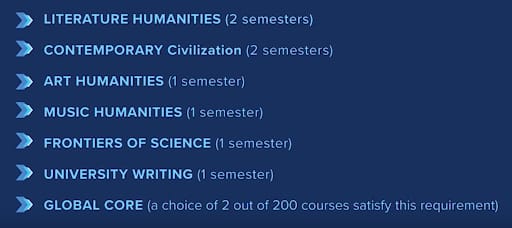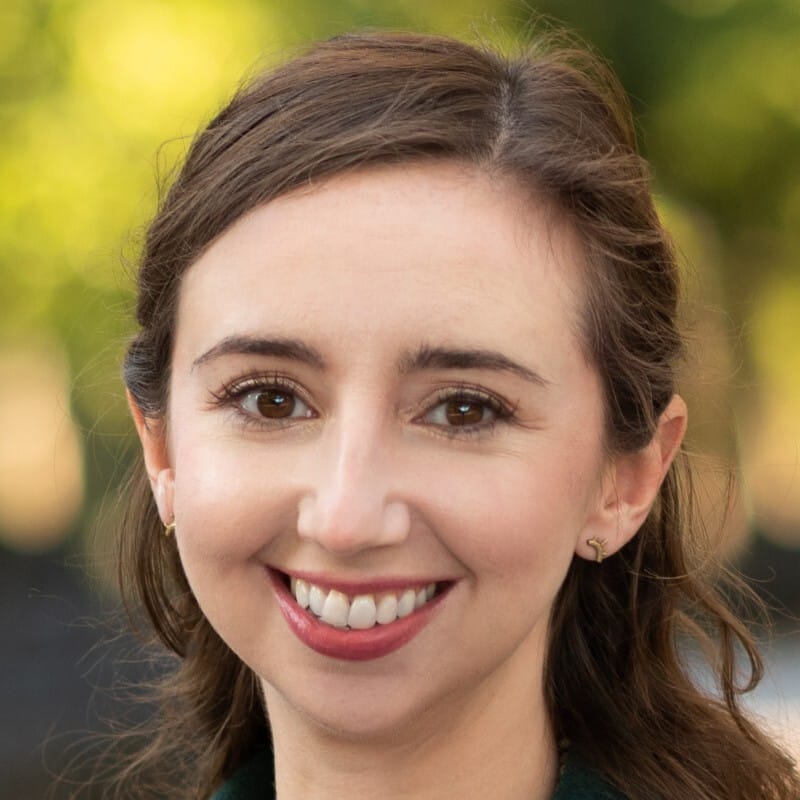
What age were you when you were told to ‘pick a path?’ I was 14. Pick one — the maths & science route, or the history & geography route. I was great with words, so I opted for the history & geo path. I do wonder how life could have been different if I had chosen maths & science. Or, gulp….
A mixture of them all 😲
If you’re reading this today, there’s a pretty good chance your school days are over. But reading through today’s article made me completely reflect & rethink my entire educational journey. Adina tells of her incredible experience at Columbia University, which by all measures, seems to be a playground for generalists. Pull up a comfy seat and dive in.

Photo: Columbia University
When people ask me where I went to college, it’s a struggle to suppress my million-watt smile.
Columbia College, the original undergraduate branch of Columbia University in the heart of the Big Apple, had been my dream school for as long as I could remember. It still feels like a miracle that I got in all those years ago, let alone that I graduated magna cum laude.
Yet when people ask me what my college major was, the complete opposite happens: I cringe.
For a while, I used to say that I majored in “cocktail conversation,” not unlike how Generalist Founder Milly Tamati talks about being “Director of Miscellaneous” at a previous job. On paper, my major was “Economics-Statistics and Hispanic Studies,” but that doesn’t quite roll off the tongue, now does it?
Plus, it doesn’t reflect the über-generalist, all-over-the-place, liberal arts education I received, which was one of the top reasons I applied to Columbia in the first place.
While I had a knack for numbers and a teenage infatuation with the Spanish language (which inevitably developed into a full-on love affair with Catalan — but that story’s for another time), I didn’t want to limit myself to just one department for my entire four years on those four square blocks of prime Manhattan real estate.
What I wanted to learn was how the world worked, and even though I’ve still got a long way to go, my university experience taught me to widen my aperture, get curious — and maybe even a little uncomfortable too.
The pressure to specialize begins quite young, even younger here in Europe, where I now live, and where high school students who plan to attend university choose their desired area of study at 16 years old. It’s a decision that inevitably marks them for the rest of their careers, for better or for worse, and I still think it’s preposterous. (Heck, I couldn’t even figure out who my real friends were at that age.)
In the United States, the outlook is a little broader. In most cases, your college major won’t make or break your professional career; fewer jobs require college degrees anyway. That said, science, technology, engineering and mathematics (STEM) programs are taking over nationwide at the expense of the arts and humanities and, I’d argue, humanity in general.
As more companies and organizations recognize the tremendous value of generalists to help solve today’s most pressing “wicked problems,” it’s all the more important that a modern education reflects and fosters the generalist spirit.
Our era is one of big changes at supersonic speed, yet the challenge to educate students to think bigger and broader is nothing new.
For over 100 years, Columbia’s Core Curriculum has been a bastion of a well-rounded university education. Consisting of a suite of required courses across different and often divergent subject matter, it’s the oldest American program of study of its kind, one that inspired similar programs in classrooms across the country.
“When the Core was first established in 1919, the intention was to ‘prepare students for what they called the insistent problems of the present.’ The idea was to create a curriculum that was not about specialized expertise in a particular area. It’s not about the transmission of knowledge but rather about developing your skills as a thinker and a creative problem solver by reflecting on the world and your own experience in the world.”
— Larry Jackson, Associate Dean of Academic Affairs, Core Curriculum and Undergraduate Programs at Columbia College
What does a curriculum like that look like? It’s been over 15 years since my first Core class, so even I needed a refresher. Here's the breakdown from my alma mater:

Photo: Columbia University
That’s all in addition to a handful of other requirements, including a swim test where the intensity to sink or swim was literal. The curriculum has gone through several overhauls over the past couple of decades, especially when it comes to the authors who appear on the syllabus. Even in class, I remember several of us questioning the canon of “Western Masterpieces” as the definitive guide to humanity rather than just a slice of it. And I remember several “good conversations, not necessarily with people you agree with,” as recent students report, being the real showstopper of the Core Curriculum.
Many of the books and the works discussed in our classes still stick with me today, giving me plenty of source material for, yes, said cocktail conversation. But rather than bore you with my own collection of “Great Books” currently collecting dust on my bookshelf, here are some Core Curriculum highlights that are worth just as much to me as my transcript:
Crying to my Literature Humanities (“Lit Hum”) instructor during office hours about our classroom discussions on the Bible because I’d never approached religious books outside a synagogue and it was all so uncomfortable and overwhelming… and necessary for my growth.
Bumping into a classmate on the M4 bus to the Met Cloisters for an Art Humanities (“Art Hum”) field trip, where we spent more time catching up about boys than marveling over world-renowned medieval art and architecture, and needless to say she’s one of my best friends to this day.
Planning a surprise baby shower with classmates for our Contemporary Civilization (“CC”) instructor, who played both referee and coach during heated debates on dense works of philosophy, Nietzche in particular.
Gushing over the sumptuous sets of Franco Zephirelli’s production of “La Traviata” from the nosebleed section with my Music Humanities (“Music Hum”) class at the Metropolitan Opera, an experience I repeated years later as an alum and wrote about here.
Downing bucket-sized cups of coffee on walks to Frontiers of Science lectures (on Mondays at 9 a.m., no less) and texting my dorm friends on my flip phone to let them know I’d save us some seats.
Getting complicated thoughts off my chest and down on the page in University Writing, where a kind graduate student encouraged my knack for words and we bonded over our mutual love/hate relationship with cosmetics and Disney movies.
Struggling to keep up with native Spanish speakers in my Hispanic Cultures classes (which counted toward the Global Core requirement) and realizing that I’ll never be as fluent as them, though that shouldn’t ever stop me from speaking up.
As I reflect on these experiences, I’m reminded that people and knowledge come in all different forms, a concept that’s all too easy to forget in the era of algorithms, silos and hyperspecialization, and I was glad to be surrounded by so much diversity at university.
We may share much of the same syllabus as the distinguished alumni who came before us as well as current students, yet I’d bet good money that no two classroom discussions are ever alike. I’d also pay good money to be back in a Core Class right now just to listen to how new minds are approaching the latest “problems of the present,” like the recent rise in generative AI.
Alternatively, in an ever-growing, ever-globalized world, it’s a delight to meet other college alumni on some sliver of the internet (usually LinkedIn, hah!) and bond over how we all made it through “the Core.” It counts a lot more than school colors, campus geography and general Ivy League snobbery these days.
The Core Curriculum made me hyper-aware of my strengths and weaknesses as both a student and adult, and a generalist too.
The experience took me and thousands of others out of our comfort zones, challenged our so-called niches, and showed us how to be generalists even if we didn’t quite know it yet. It taught me how to learn whatever’s put in front of me, like it or not, and try to understand how it relates to what I’ve seen before. From there, the aperture continues to widen until there’s really nothing I’m too afraid to tackle. (Maybe I’ll pass on more Nietzsche, thankyouverymuch).
This perspective has come up countless times in my career, from my first job where it was paramount to know the ins and outs of obscure Broadway plays and musicals, to my current roster of freelance work, which ranges from tech and innovation to plant sciences and urban planning.
When we met, my first boss in Barcelona admitted that he didn’t know what I “did” for a living but he hired me precisely because he had heard I was the kind of right-hand (wo)man who could tackle anything that could come at us.

When my copywriting students last winter told me they didn’t actually understand how ChatGPT worked, I gave them a brief 101 on statistics and how it applies to large language models.
When potential new clients ask me about my niche, I confidently reply that my strength is my wide wheelhouse: I’m a Swiss army knife who has rocked classrooms and boardrooms by bringing forward important questions and creative solutions that next to no one expects, myself included sometimes.
As millions of kids, teens and adults go back to school this season, think critically about whether common educational curricula are properly preparing us and the next generation for the unknown. Is specialization coming at us all too quickly? Are we learning how to go beyond our comfort zone and stay curious? What’s the point of an education anyway?
Surely, Columbia’s Core Curriculum doesn’t have all the answers. But I’m thrilled to see more schools going in that direction, and by that, I mean going in lots of directions at once. As a generalist, it’s how I thrive. Now I can say I’m not just doing it for the diploma anymore. I’m truly a generalist to my core.
About the author:

Meet Adina:
Adina Levin is a born-and-raised Chicago city kid who clocked in 10-plus years in New York City before moving to Barcelona in 2018. Fluent in English, Catalan, Spanish and gibberish, she’s a freelance writer and communications generalist who gravitates toward cities, culture, media and tech.
👾 Enjoyed this issue? Amazing! Feel free to screengrab or borrow quotes and share them on your socials! Just tag @millytamati or @generalistworld and I’ll amplify your post
👾 Enjoying the newsletter? Amazing! It’s written by a team of clever humans from the Generalist World community. You can join them, & hundreds of others, nailing our squiggly career journeys. Click to explore memberships.

